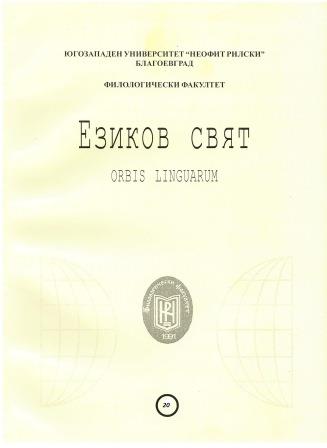МОРФОСИНТАКТИЧНИЯТ ПОДХОД В ПРЕПОДАВАНЕТО ПО БЪЛГАРСКИ ЕЗИК КАТО ЧУЖД: ВАЛЕНТНОСТ И РЕКЦИЯ НА БЪЛГАРСКИЯ ГЛАГОЛ
TEACHING BULGARIAN AS A FOREIGN LANGUAGE FROM A MORPHOSYNTACTIC PERSPECTIVE: VALENCY AND RECTION OF THE BULGARIAN VERBS
Author(s): Krasimira HadzhievaSubject(s): Language and Literature Studies, Foreign languages learning, Theoretical Linguistics, Morphology, Syntax
Published by: ЮГОЗАПАДЕН УНИВЕРСИТЕТ »НЕОФИТ РИЛСКИ«
Keywords: verb valency; verb rection; morphosyntactic perspective; Bulgarian as a foreign language
Summary/Abstract: Despite the skepticism of a number of linguists towards the valency theory it should take an important place in foreign language teaching. Valency theory is closely related to the phenomenon of verb rection. The valency of a verb refers to its ability to control the number and type of the arguments that can appear in its environment. Valency is a syntactic (and a semantic) notion. The rection of a verb refers to its ability to determine the morphological form of the words that appear in its environment. Since the verb is in control of the declension of the neighbouring words (nouns, adjectives, pronouns, etc.), that is to say, it requires a word to be modified to express different grammatical categories such as number, case, definiteness, etc., rection could be considered a morphological notion. Due to the interface between this two phenomena, in other words, due to the interaction between syntactic and morphological features of the words a morphosyntactic approach is applicable in foreign language teaching, and in particular in teaching Bulgarian as a foreign language. Valency and rection are among the major sources of grammatical errors in foreign language learning. Consequently, a good approach for learners of Bulgarian is to learn new verbs simultaneously with their valency and rection.
Journal: Езиков свят - Orbis Linguarum
- Issue Year: 20/2022
- Issue No: 1
- Page Range: 086-091
- Page Count: 6
- Language: Bulgarian

